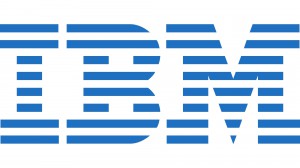Worek
Rocket maker for NASA and the Air Force to begin 3D printing parts
United Launch Alliance (ULA), who makes rockets for NASA and the Air Force, is planning to 3D print 100 parts for the next-gen model of its Vulcan rocket, which is expected to launch in 2019. Rockets cost about $165 million for ULA, and 3D printers are expected to save as much as $1 million per year in manufacturing costs. Creating these parts in house with 3D printing allows ULA to maintain internal quality control without having to deal with other companies. ULA has previously used 3D printing to make molds and guides, but has not used it to make parts before. Additionally, the company expects to use 3D printing for “rapid prototyping of parts.” This allows engineers to test a part for functionality before having to go through production or deal with a supplier.
Would you expect 3D printing to be adopted in something like rocket manufacturing?
What other manufacturers do you think could benefit from 3D printing parts?
Why CIOs Can’t Sell Enterprise Collaboration Tools
Enterprise collaboration is a concept that almost everyone supports, but is rarely implemented correctly and fully accepted. This is because businesses do not know what they are aiming to achieve, and end up failing the project. In order to improve the success of these projects, CIOs need to not only support the functionality, but also be a champion for it. This means using the software instead of telling others to.
Experts say that enterprises struggle with cross-functional communication from department to department or office to office. Collaboration tools can assist with this but requires identifying specific needs to choose what software to use. There is also a disconnect between the needs of employees and the C suite. Older executives are struggling to embrace technologies that seem simple to younger employees, which create a hazy picture for implementing a new technology. The biggest challenge, however, is the employees’ mindset about collaboration technology. If the demand for employees is not there, they will just work around the technology and ruin the return on the project.
What experiences have you had with collaboration tools at Temple or at an internship? What was more successful?
ATMs Get a Cloud Update
NCR, the leader in ATM technology, introduced new  software that will allow ATMs to use the cloud in order to improve security and lower costs. About 75% of ATMs run Windows XP, which Microsoft suspended support for in April 2014. The new cloud software will allow machines to be updated remotely instead of the manual uploads required with Windows XP. NCR claims that this will allow banks to service machines twice as fast as before.
software that will allow ATMs to use the cloud in order to improve security and lower costs. About 75% of ATMs run Windows XP, which Microsoft suspended support for in April 2014. The new cloud software will allow machines to be updated remotely instead of the manual uploads required with Windows XP. NCR claims that this will allow banks to service machines twice as fast as before.
Do you think that NCR was late to implement this technology since Windows XP was no longer supported?
What other disruptive technologies do you think could be implemented into ATMs?
Cloud computing brings changes for IT security workers
IT security experts are struggling to compete with cloud computing. Because of the low cost and expertise received from vendors like Google and Amazon, security professionals are failing in determining configuration management processes. Configuration management means recording and updating data for software and hardware to know which applications are used on computers. This is difficult because it requires understanding what employees do in an organization, and why certain technologies are used to operate in the business. Since this is a difficult process and not all IT departments are aligned with the business, enterprises are turning to cloud providers who have a better understand for a lower price. Security professionals need to create a business case to gain support on using in-house employees instead of a vendor to combat this threat. The article recommends talking about how much money can be saved from removing software that is not part the configuration plan. If this trend continues, IT and enterprise computing could turn into a commodity and simply outsourced, which means less control and less peace of mind for the business.
How else do you think security professionals can compete against these vendors? Do you think that IT has a threat to be turned into a commodity?
IBM to Invest in IoT
IBM will invest $3 billion over four years to create an Internet of Things business unit. The focus of the unit will be on travel, logistics, insurance, public utilities, transportation, and retail. IBM plans on partnering with other companies for this project, such as AT&T and semiconductor companies. IBM also started that they are going to work with engine manufacturer, Cummins, to collect real time data on products. Whirlpool is also working with IBM to better predict when appliances need servicing. Additionally, police departments in Durham, NC and Memphis, TN use IBM products to target crime hotspots. The IDC estimates that there will be 28 billion IoT devices by 2021.
Do you agree that IBM should partner with other companies?
Do you think that IBM is too late, or are they entering the market at the right time?
NBCUniversal Redirects IT Focus to Innovation
Atish Banerjea, CIO at NBCUniversal, talks about his experience in improving IT’s image and performance at NBCUniversal. Banerjea states that IT just played a back office role at NBCUniversal. His goal was to move IT from the back office into business unit leadership. The first hurdle was the lack of investment for IT. Banerjea was able to gain support from Comcast, who recently acquired NBCU. Comcast gave capital to allow IT to invest in infrastructure and IT talent. He decided to make improvements where employees would notice changes. This included increasing email capacity, upgrading mobile and desktop devices, and improving the help desk. The most important move that Banerjea did was embedding CIO’s into the business units. This has allowed IT to create support for business units, and offer value from a business perspective.
Do you think embedding CIOs into business units is a good model or do you think they should be a separate entity?
What else do you think Banerja could do to improve IT at NBCUniversal?
Taking an Investment Management Approach to IT

This article about managing IT projects features an interview with Joe Spagnoletti, CIO of Campbell Soup Company. Spangoletti discuses how he approaches the responsibilities of IT projects and who is accountable for the result. He states that Campbell Soup is moving from an order taking model to a demand driving model. This new model empowers business managers to have more say in IT investments and the IT project portfolio. This means that IT employees work closer with the business side of the company to have a better understanding of the business manager’s desired impact of the project. There are some negatives with this model. The first is determining who owns the decisions. It can be ambiguous who is responsible when an IT employee proposes an idea and the business employee accepts the plan. Another negative is that IT can face more scrutiny under this model. There is more transparency with IT costs and how much value is actually achieved. This puts IT under a magnifying glass and which can seem threatening to the department. Spagnoletti echoes one of the most important concepts of our class: IT decisions need to align with the business strategy. When IT works alone, the business does not get what it needs.
Where would we fall in this business/IT interaction? Would we be middlemen? How can companies face some of the downsides to this model?






